MARTIN FENGEL
Monday, July 8th, 2013ZÄUNE UND MAUERN
Martin Fengel is a Munich-based artist.
ZÄUNE UND MAUERN
Martin Fengel is a Munich-based artist.
— I was talking to a friend about a scene in Full Metal Jacket and he said “that is my favourite war movie”. Later, I thought, what does that mean? What does a favourite war movie satisfy? What makes it so desirable? All narrative cinema pivots on the transformation of a protagonist and so most war movies satisfy this requirement in spades. From An Officer and a Gentleman to Platoon, the young soldier is transformed into a man, either ruined by brutality or recused by structure, there is a simple pleasure in watching someone (other than oneself) abused into a potential killing machine.
The movie that influenced my earlier work was Sam Peckinpah’s Cross of Iron. A very violent, almost balletic film, Cross of Iron pits Russians against Germans in a blood sport of WWII. Without the Americans and without the Jews, this was the first war movie where there were no good guys or bad guys. Just a bunch of men in uniforms shooting, stabbing, raping, beheading. There was no transformation that I remember, only my own suspended sense of allegiance and the relief of not being represented in the film.
When I starting making drawing’s based on a young friend of my father’s who was killed after just on month of serving in Vietnam, I re-engaged with all those Vietnam movies I thought I loved and I no longer could love them. The fact that they were a fetish for me, and an ideal about masculinity that I couldn’t afford to indulge. My father’s friend was named Charlie and he was a race car driver, so he was already fully engaged in the fantasy of adventure and death defying acts. He wanted to get his tour of duty over as quick as possible so he could go back to Queens and continue racing his Corvette. I met him when I was four years old, when my Dad, who was an automotive photographer took me to a track in Long Island. Charlie looked like a movie star. But most of my Dad’s pictures were of the car, because at that point he was just a kid and the 67 Vette was more important than he was. Then he died and the car was raced by his friends for a year until it broke the track speed record. The winning times were written on the back window and Charlie’s sister put the car in her garage for over 30 years. It became the holy grail of muscle cars. There is no happy end to such a story. Just a lot of bullshit letters from low level military officials explaining how Charlie died. There was a cover-up and all the things we have come to believe, about casualties, friendly fire and missing paperwork seem like any number of future war movies about Iraq and Afghanistan. Like I said, there is no happy end to the story.
—
Collier Schorr is an artist and photographer. Her work explores issues of adolescence, sexuality, national identity and the body. Her photographs have been exhibited at the Walker Art Center in Minneapolis, the Jewish Museum in New York and the Stedelijk Museum in Amsterdam.
She currently lives and works in Brooklyn, New York.
Images courtesy of www.303gallery.com
www.artandcommerce.com
[neuespalte]
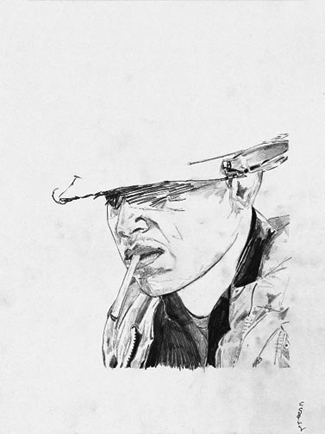
Collier Schorr, PURPLE LZ SMOKE, 2007
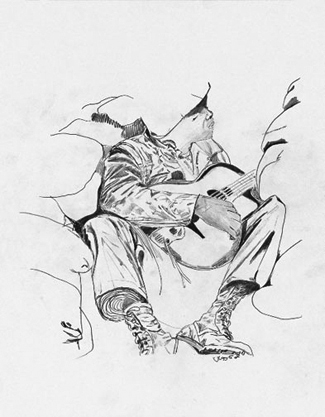
Collier Schorr, STRUMMER, 2007
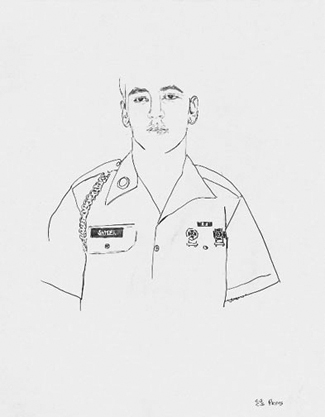
Collier Schorr, LEAVING HOME, 2007
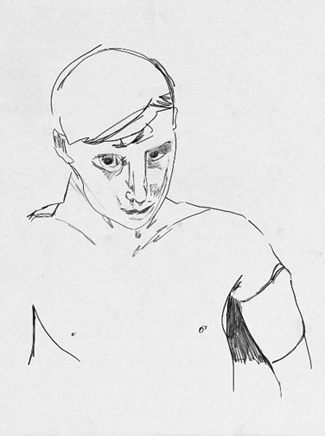
Collier Schorr, FRAGMENT, 2007
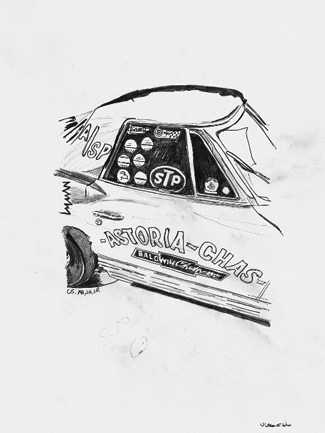
Collier Schorr, STING RAY, 2007
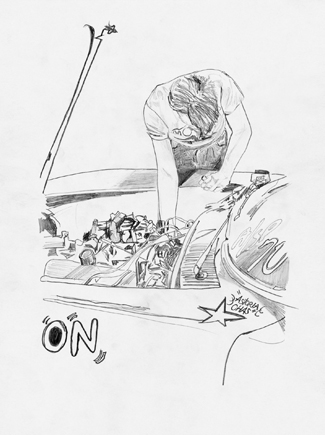
Collier Schorr, CHAS POSING FOR MY DAD, 2007
— Thursday, August 7th 2008, Punta Banda. Quiet this summer on the peninsula – bad US ‘economy’ plus weekly TV reports about car-jackings and kidnappings around the border. “You take your life in your hands going down there,” someone told me. In fact it’s much riskier here for the middle class Mexicans. Miguel Pabloff, who owns the campo I stay at, resigned from his post as mayor of Maneadero because of threats to his family, and there are regular kidnappings of local business owners. The guy who owns two Pemex gas stations in Maneadero was kidnapped and ransomed for $100,000 by his family … the owner of a local flower farm was kidnapped and murdered. “It’s the Colombians,” everyone says, “they are crazy.” The common belief is that Mexican narcos would stop short of murder – mutilation, okay, but symbolic, not fatal. During last year’s assembly election, the incumbent’s campaign manager was seized outside his office, bound, gagged and blindfolded, and finally released with his boss’s nickname cut into his face with a razor.
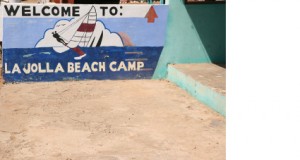
La Jolla Beach
Still, for us summer residents, it’s blissfully quiet. There are still a disturbing number of jellyfish washed up on the beach, but not as many as last year. And no red tide this year, no sting-rays.
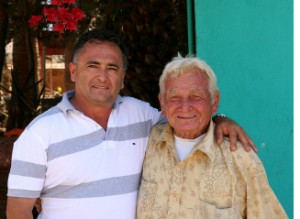
Miguel Pabloff with his father Alejandro Pabloff
Working on a novel about states of mind in underclass Bush America, I’ve been trying to learn more about psychoanalysis and therapy … the disciplines that, presumably, directly address daily forms of personal pain, numbness. I ask a few friends in this field what the new treatments are. Has anyone in the last 20 years undertaken transpositions of theory to clinical practice on the order of R.D. Laing’s Kingsley Hall or Felix Guattari’s Le Borde? The answers that come back surprise me. I’m referred to a website for Social Dreaming ™, a group of mostly-British psychoanalysts who contract “dream workshops” to large corporations. They claim to have successfully resolved a labor dispute at an Italian factory by having bosses and workers (they don’t use these terms) pool their dreams … This seems truly innovative, a great advance on the Blackberry. From 40 hours a week to boundary-less time to the unconscious … although, as a more cynical friend points out, the unconscious has been pretty much drained of its content.
I’ve been watching Louis Malles’ remarkable documentary, Phantom India, on DVD. Malle spent several months in India during 1969 with a small crew making this seven-hour film for French television. It’s a beautiful artifact of 20th century humanist generalism. Malle, then 35, resolves to keep an open mind about India, allowing impressions to float as they travel. Coming from the ideologically-steeped era of barely post-’68 Paris, Malle is not unaware of the political struggles then being waged between the National and Communist parties, but as an outsider he’s free to also consider the intractable beauty of folk religions whose meanings are reaffirmed in primitive daily routines. As an amateur ethnographer at the end of ethnography, he’s aware of the battle of time taking place in front of his eyes between urban and rural. And yet: caste has morphed into class, and this gently sanctified daily routine occurs within a grossly exploitative framework. He draws no conclusions. I think about Malle’s later life, his marriage to Candice Bergman, how naive this work might have seemed retrospectively. And yet: unrepeatable. The film seems to be having a small revival – a Michigan friend, former pedophile activist – is screening it publicly. (The friend never exactly recanted – his “boy” just got older.)
Jon Isaacs tells me he’s recording his music this summer on cassette, not CD, because it’s harder to upload. “One reason,” he emails, “for the music industry’s downfall is that music is too readily accessible. I remember seeing lines of people at record stores in the early 90s when an album came out b/c that was the only way you could hear the music.”
—
Chris Kraus is the author of three novels, most recently TORPOR, and a collection of art essays. She is presently working on a new novel about American justice and flawed reciprocity called SUMMER OF HATE.
All photos by Iris Klein